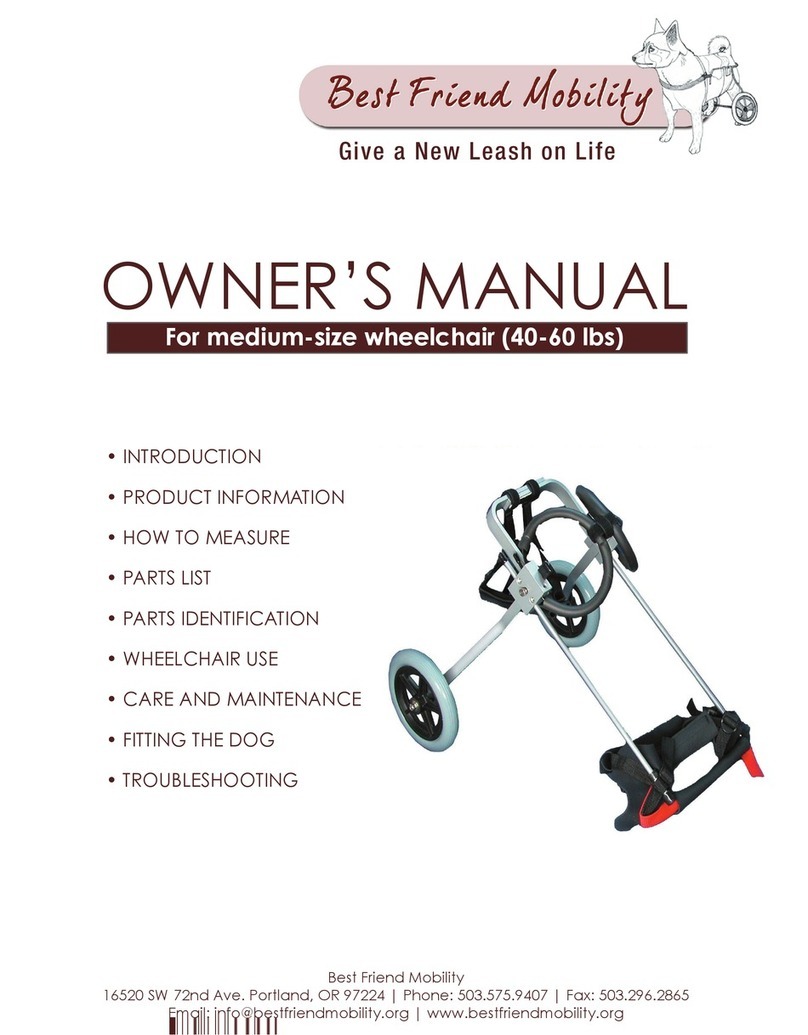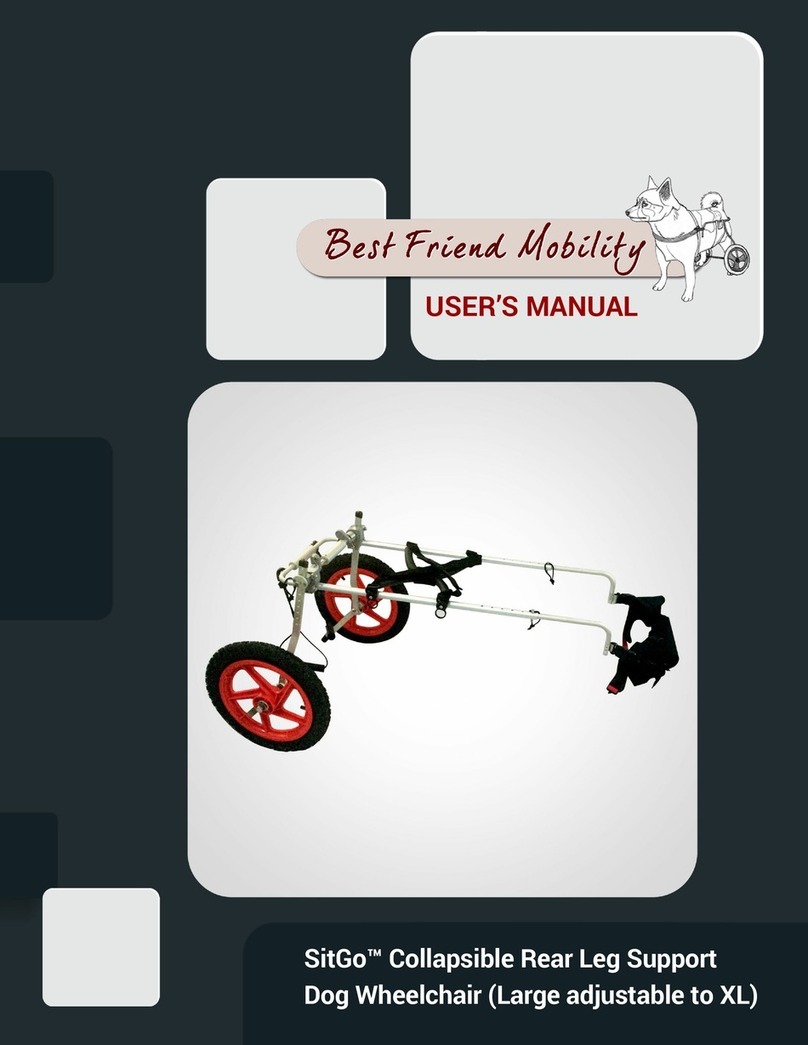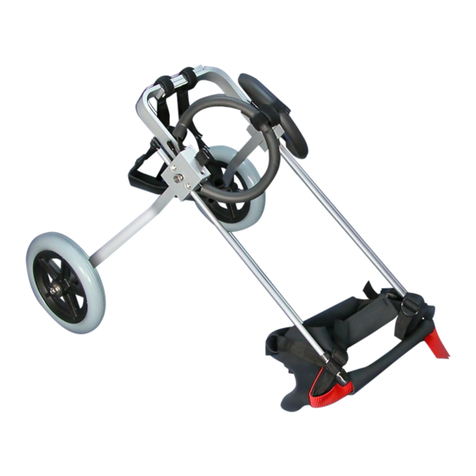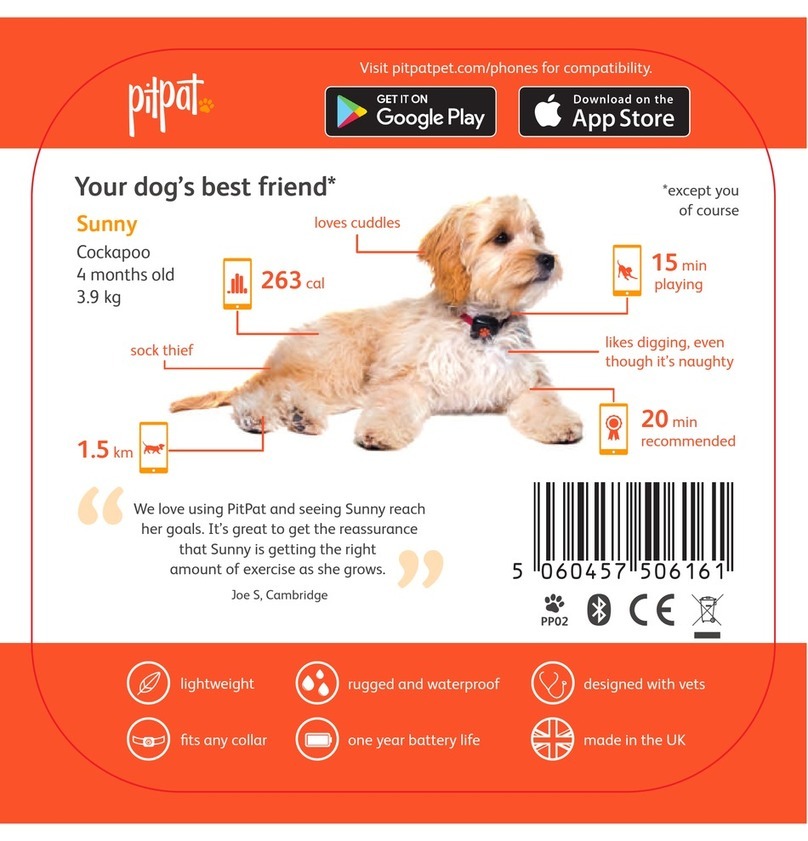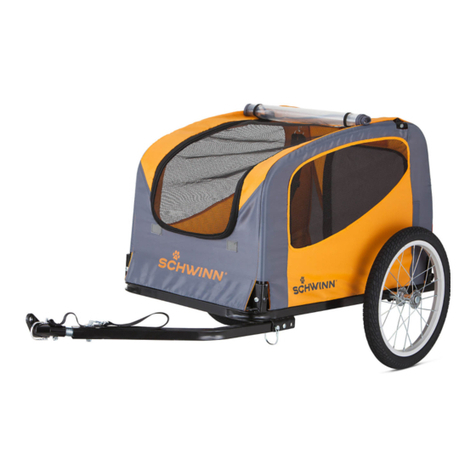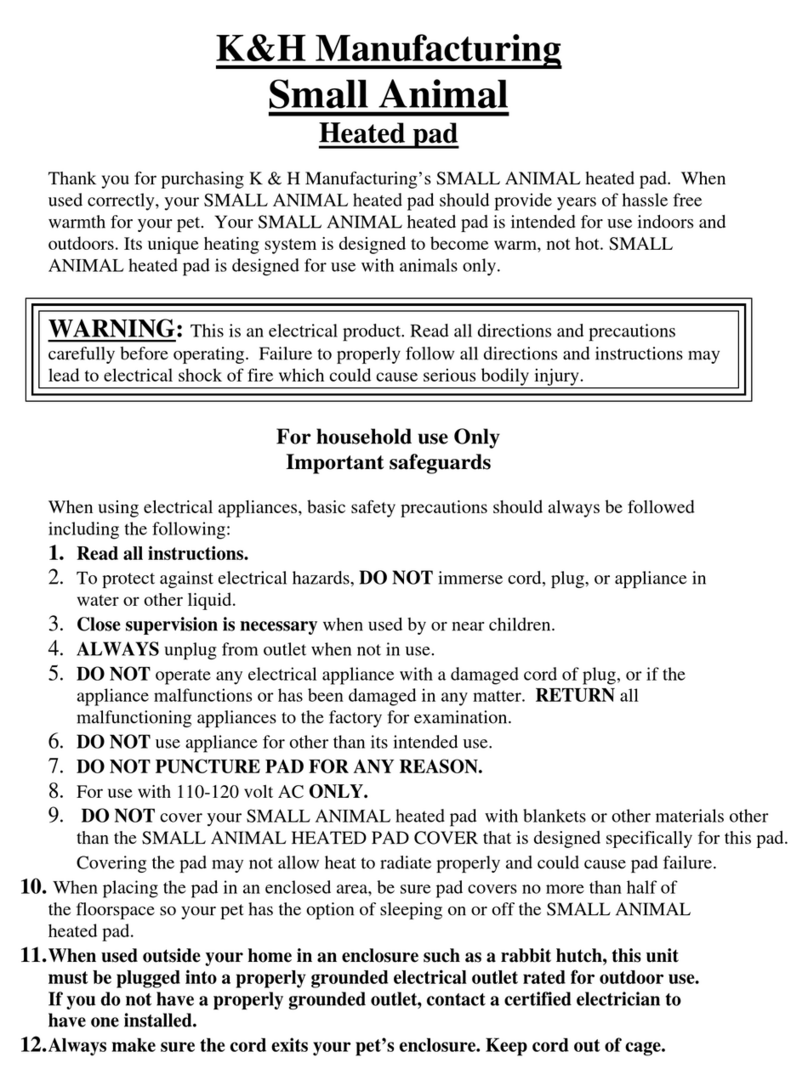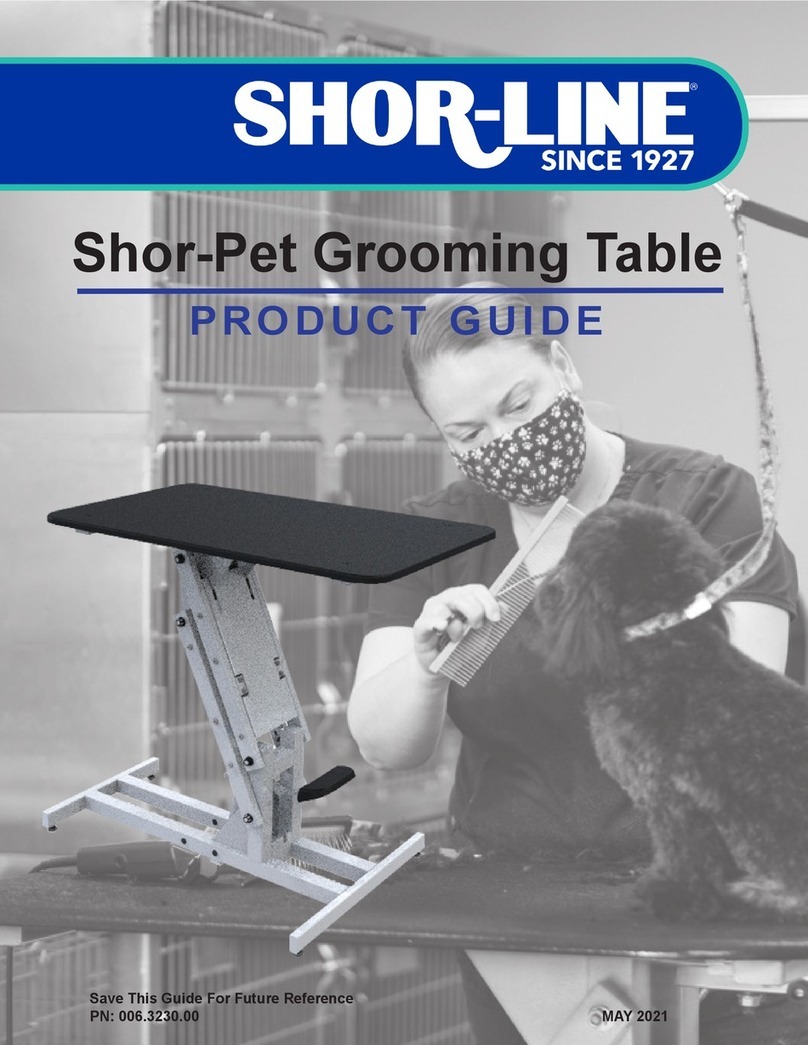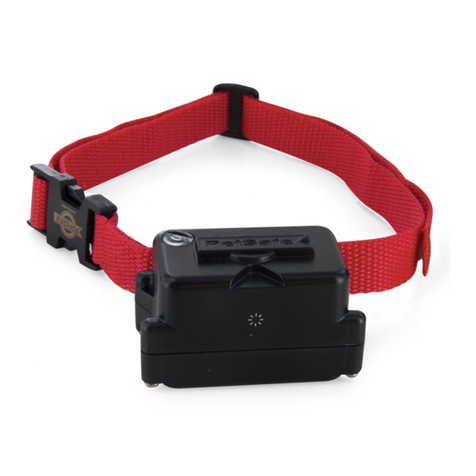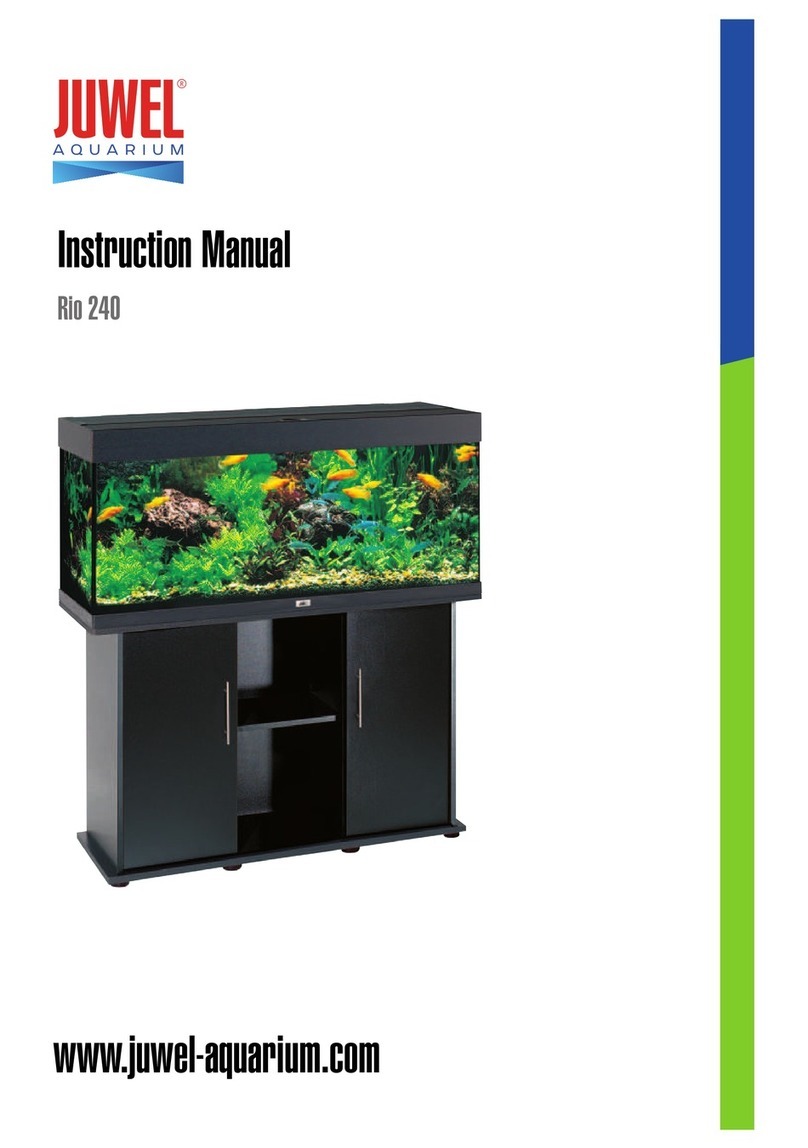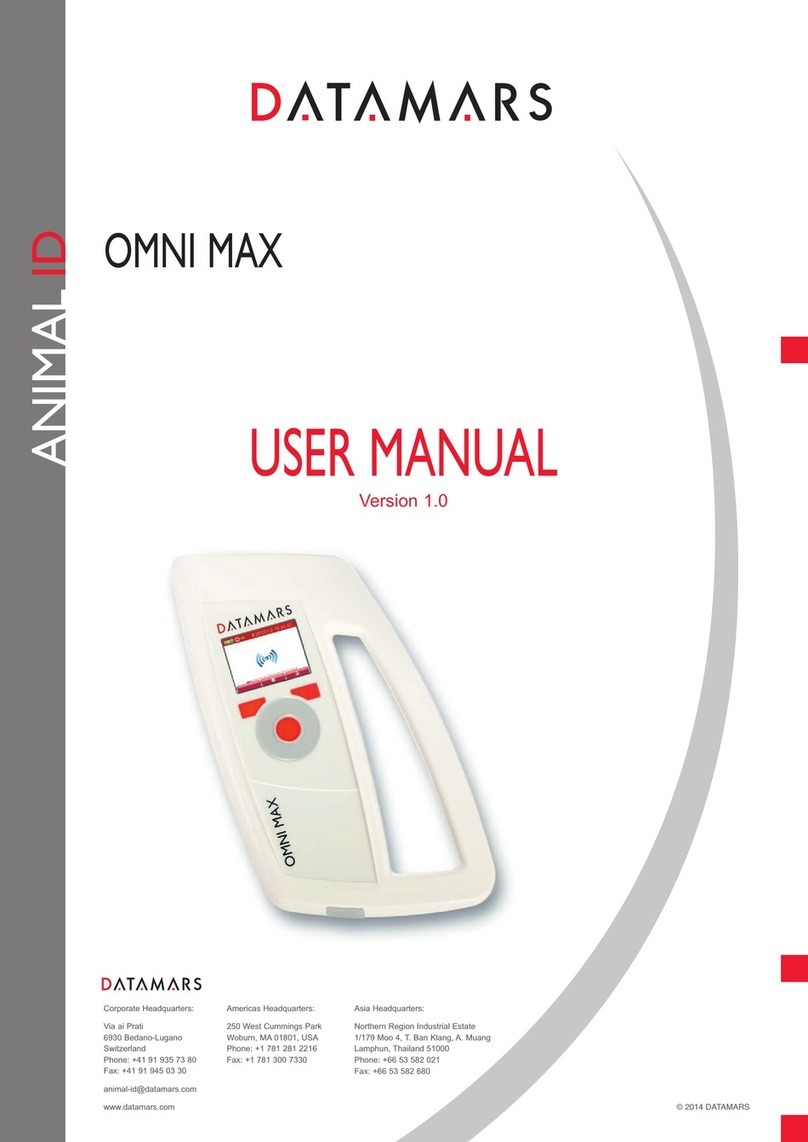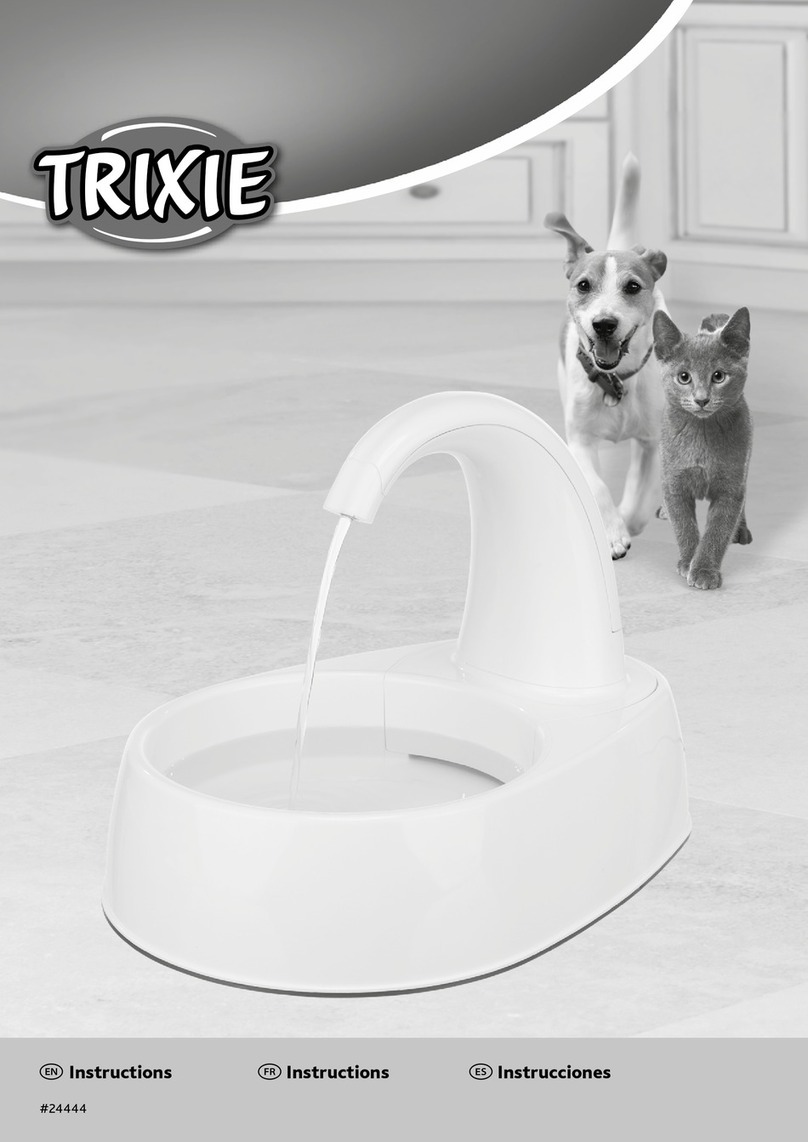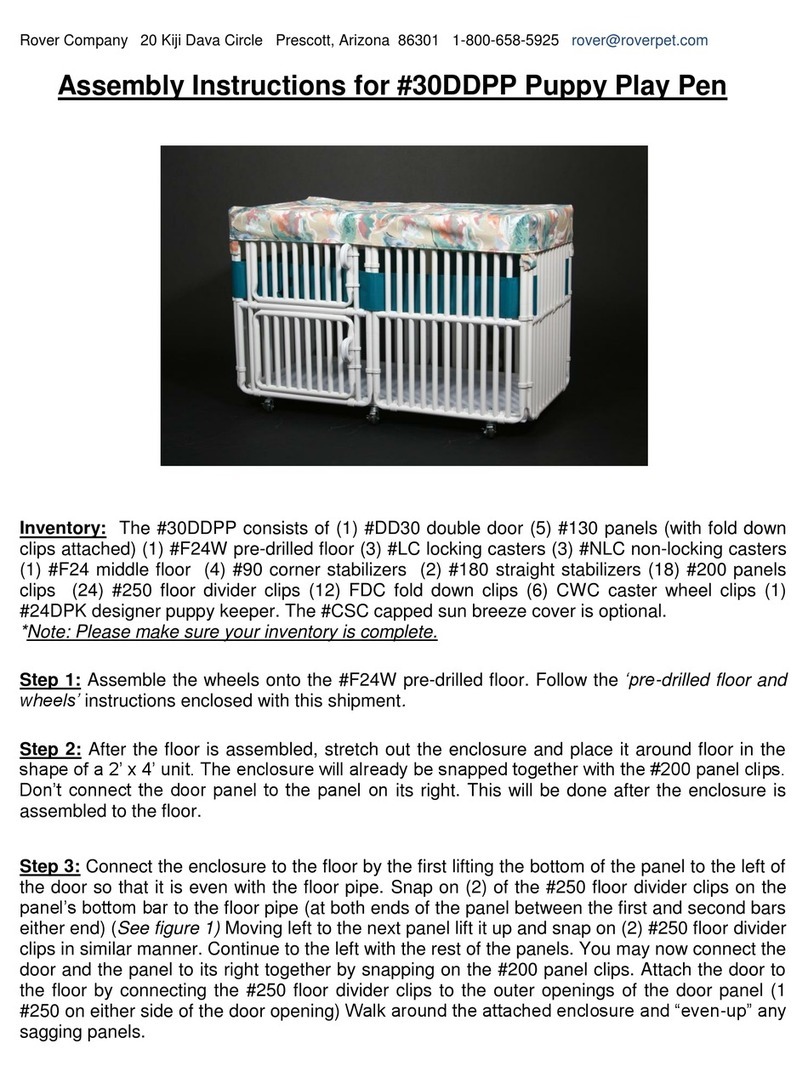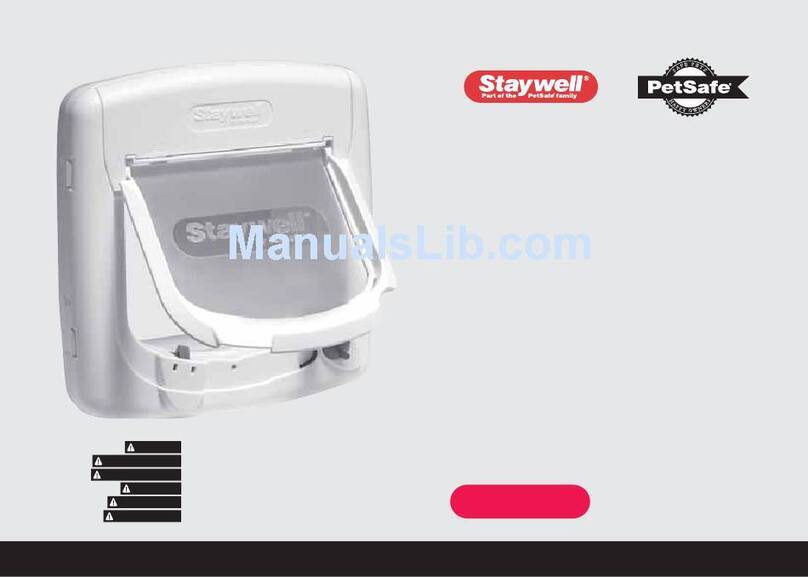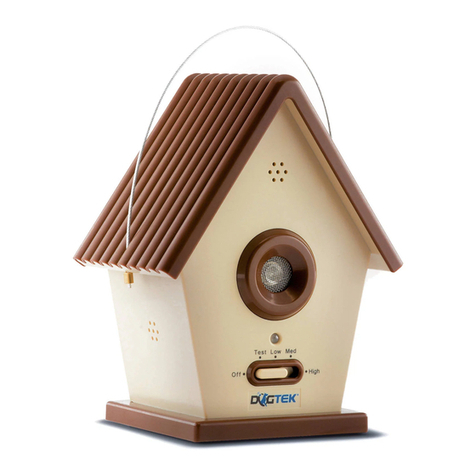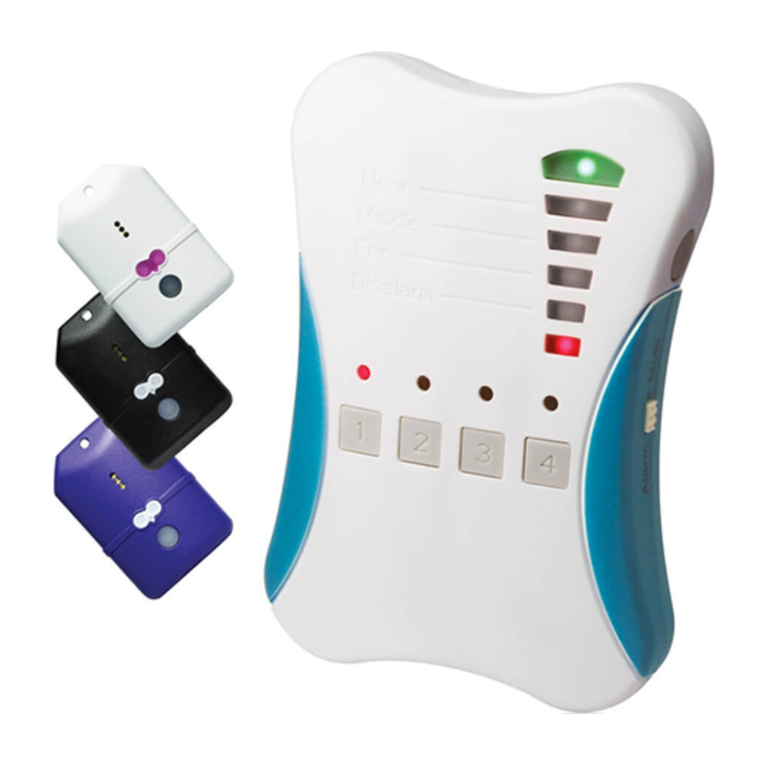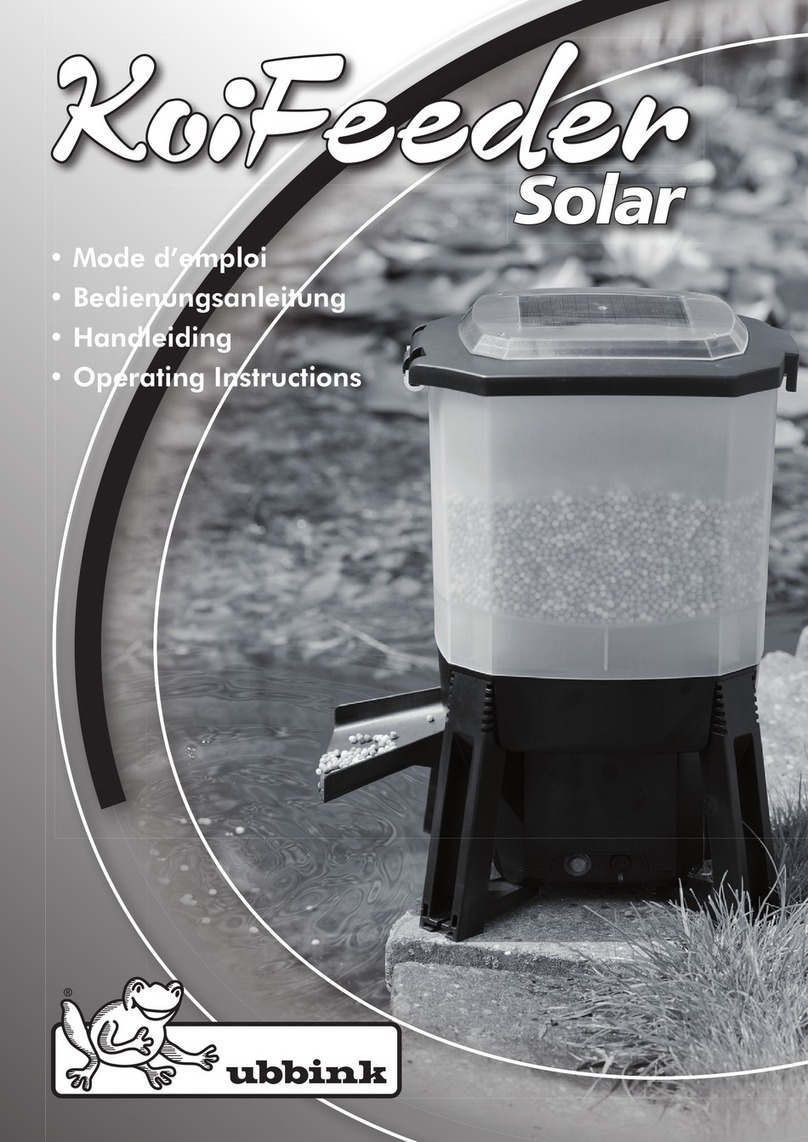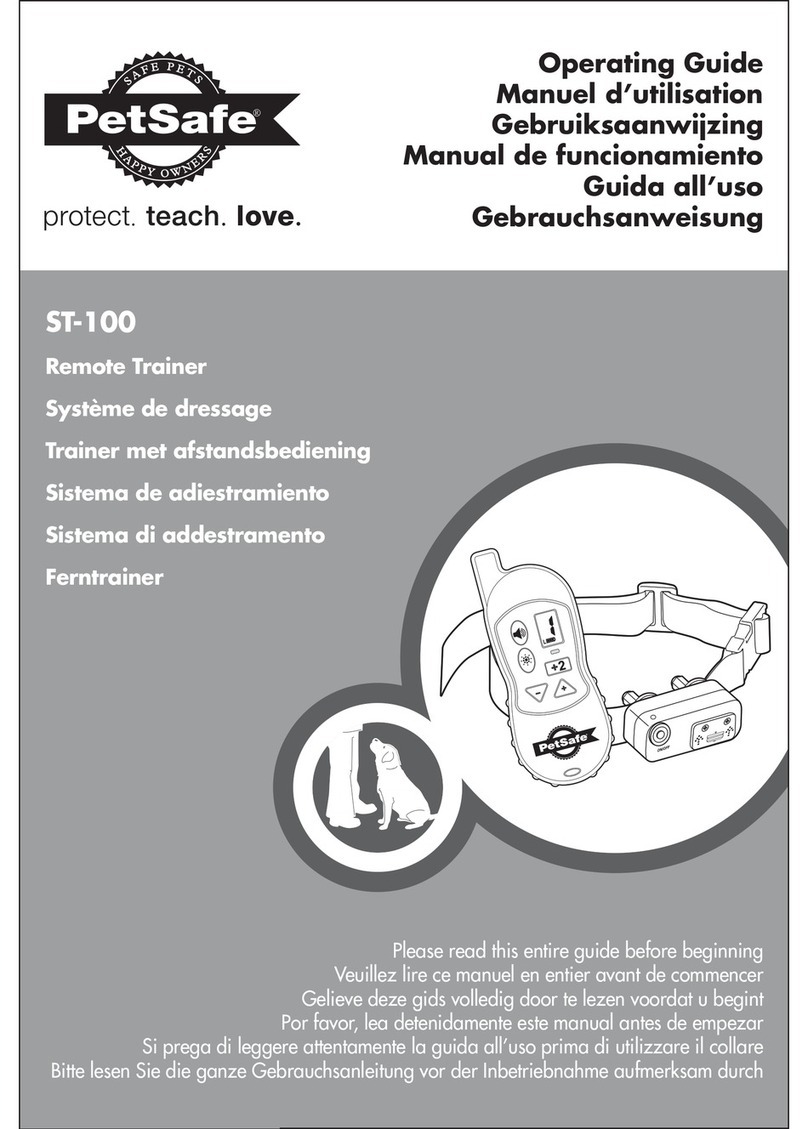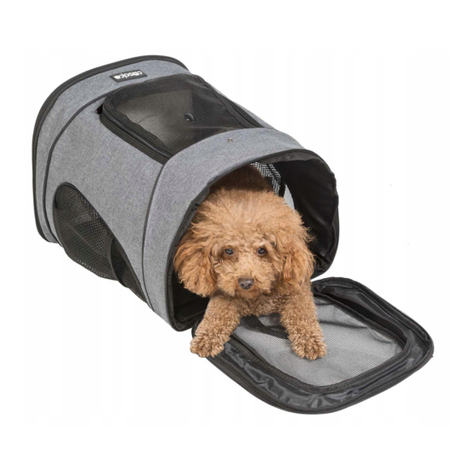Best Friend Mobility extra large-size wheelchair User manual

OWNER’S MANUAL
• INTRODUCTION
• PRODUCT INFORMATION
• HOW TO MEASURE
• PARTS LIST
• PARTS IDENTIFICATION
• FRAME ASSEMBLY
• WHEEL ASSEMBLY
• WHEELCHAIR USE
• CARE AND MAINTENANCE
• FITTING THE DOG
• TROUBLESHOOTING
For extra large-size wheelchair (100-175 lbs)
Give a New Leash on Life
Best Friend Mobility
16520 SW 72nd Ave. Portland, OR 97224 | Phone: 503.575.9407 | Fax: 503.296.2865
Email: [email protected] | www.bestfriendmobility.org

1
INTRODUCTION
Best Friend Mobility® Rehabilition Aids
Dear Pet Owner and Valued Customer:
The following guidelines, along with the attached assembly and fi tting instructions, will assist
you in gaining the best use of your dog wheelchair.
If your pet is fully NON-weight bearing on his/her hind legs, we recomment gradually
conditioning your pet to his/her wheelchair before prolonged periods of exercise are
attempted. It will take about 2 weeks for your pets to become strong enough in the front legs
to compensate for the non-weight bearing in his/her new chair. We suggest starting your
pet with ten minutes exercise, walking over hard surface. Using a leash, attached in a normal
fashion to your pet’s collar or to the front harness is advised. Repeat twice daily for the fi rst few
days, then increase to three times a day.
Once this amount of exercise is well tolerated, the amount of time can be extended to match
your pet’s stamina.
For pets that are coming back to walking on their own, we recommend daily use if their cart in
order to get adequate exercise. This will NOT prevent them from walking but rather encourage
them to do so.
DO NOT LEAVE YOUR PET ALONE IN THE CART
If you have any questions please call us on the number provided in this manual. We also enjoy
receiving pictures or a video of your pet in his/her wheelchair for our reference and also fi tting
evaluation. Photos should be taken from the side, rear, and looking down from above. These
photos will help us to assist you in making all adjustments needed to ensure that your pet will
gain the most benefi t from its new mobility.
We realize that both you and you rpet are unfamiliar with using a dog wheelchair, so do not
hesitate to contact us for help.
Thank you for purchasing a Best Friend Mobility® dog wheelchair. We love receiving feedback,
stories, photos and videos of how your pet is doing his/her own wheelchair.
Sincerely,
Tim Cantrell
Vice President
Phone: 503.575.9407
Fax: 503.296.2865
Introduction
Product Information
How to Measure
Parts List
Parts Identifi cation
Frame Assembly
Wheel Assembly
Wheelchair Use
Care and
Maintenance
Fitting the Dog
Troubleshooting
© 2011 Best Friend Mobility | www.bestfriendmobility.org | 503.575.9407

2
PRODUCT INFORMATION
This Best Friend Mobility® is made to fi t any dog from 100-175lbs.
The widest width of Best Friend
Mobility® (with wheels) is 21”.
Best Friend
Mobility® measurements are length 29”
- 32.25” (adjustable), width (ID) 10.5”,
Mobility® measurements are length 29” - 32.25” (adjustable), width (ID) 10.5”, Mobility® measurements are length 29”
height 17.5” without wheels and 21.5” with wheels.
It will adjust in height about +/-5” tall, and about 3” in length. It will not adjust in width or
saddle (width measurement from top, or thigh measurement).
It has 14” all-terrain wheels, padd
ed shoulder support, triple thronged neoprene adjustable
shoulder harness
, and double rear leg EVO
neoprene harness. It has a fi
xed, padded seat for
comfort. The dog can still go to the bathroom comfortabl
y in this rear harness.
There are also rear leg straps if your pet has completely lost the use of his
or her rear legs.
Lightweight and non-corroding alumi
num, very light and rugged. Adjusts with a hex wrench.
Easy clip on harness.
Specs:
• Lightweight adjustable aluminum frame (non-rust)
•
Non-rust stainless or galvanized hardware (only 2 bolts required)
•
Deluxe neoprene front and rear harness for complete comfort
•
Designed and tested by K9 Orthopaedic surgeon
•
Easy to adjust heigh
t and length with hex wrench
•
Pet can use the cart for assi
sted walking or
full rear leg support with no
rear leg weight
bearing
•
Allows pets to use bathroom
while in cart
•
All terrain
pneumatic
wheels with sealed bearings
•
E
asy cl
ip on function of
the rear and front harness
© 2011 Best Friend Mobility | www.bestfriendmobility.org | 503.575.9407
Introduction
Product Information
How to Measure
Parts List
Parts Identifi cation
Frame Assembly
Wheel Assembly
Wheelchair Use
Care and
Maintenance
Fitting the Dog
Troubleshooting

3
HOW TO MEASURE
The following dimensions may
help you to adjust your
new wheelchair to fi t your
best fri
end
perfectly.
Best Friend Mobility is good for:
•
Hip Dysplasia
•
Arthritis
•
Rehabilitation
•
Neurological problems like osteomyelitis or degenerative myelopathy
•
Fractures spine/back
•
Rear limb amputee
•
Ligamentous injury like PCL or ACL
•
Thoracic
or Lumbar disc injury
•
Any other condition that resu
lts in rear leg pain or we
ak
ness
© 2011 Best Friend Mobility | www.bestfriendmobility.org | 503.575.9407
Introduction
Product Information
How to Measure
Parts List
Parts Identifi cation
Frame Assembly
Wheel Assembly
Wheelchair Use
Care and
Maintenance
Fitting the Dog
Troubleshooting

4
PARTS LIST
© 2011 Best Friend Mobility | www.bestfriendmobility.org | 503.575.9407
Introduction
Product Information
How to Measure
Parts List
Parts Identifi cation
Frame Assembly
Wheel Assembly
Wheelchair Use
Care and
Maintenance
Fitting the Dog
Troubleshooting

5
PARTS IDENTIFICATION
© 2011 Best Friend Mobility | www.bestfriendmobility.org | 503.575.9407
Introduction
Product Information
How to Measure
Parts List
Parts Identifi cation
Frame Assembly
Wheel Assembly
Wheelchair Use
Care and
Maintenance
Fitting the Dog
Troubleshooting

6
FRAME ASSEMBLY
© 2011 Best Friend Mobility | www.bestfriendmobility.org | 503.575.9407
Introduction
Product Information
How to Measure
Parts List
Parts Identifi cation
Frame Assembly
Wheel Assembly
Wheelchair Use
Care and
Maintenance
Fitting the Dog
Troubleshooting
Frame Parts:
1. DC01A Left Sidearm
2. DC02A Left Front Harness Bar
3. DC01B Right Sidearm
4. DC02B Right Front Harness Bar
5. Front Harness Female Clips
6. DC09 Clip Connectors
7. Clip Connector Screws
8. DC07 Frame Connectors
9. Sidearm Bolts
10. Washers
11. DC04 Frame Supports
12. DC08 Upper Crossbar Connectors
13. DC03 Upper Rear Crossbar
14. SFT Connector
15. DC05 Lower Rear Crossbar
16. DC06A Right Wheel Connector
17. DC06B Left Wheel Connector
18. DC10 Rear Harness Support

7
WHEEL ASSEMBLY
© 2011 Best Friend Mobility | www.bestfriendmobility.org | 503.575.9407
Introduction
Product Information
How to Measure
Parts List
Parts Identifi cation
Frame Assembly
Wheel Assembly
Wheelchair Use
Care and
Maintenance
Fitting the Dog
Wheel
Parts:
1. Wheel
2. Treads
3. Tire
4. Valve
5. Valve Cap
6. Bolt Head
7. Wheel Bolt
8. Washer
9. Nut

8
WHEELCHAIR USE
© 2011 Best Friend Mobility | www.bestfriendmobility.org | 503.575.9407
Introduction
Product Information
How to Measure
Parts List
Parts Identifi cation
Frame Assembly
Wheel Assembly
Wheelchair Use
Care and
Maintenance
Fitting the Dog
Troubleshooting
If your dog is completely non-weight bearing on the hind legs and will be using the leg straps,
then it is normal for the front legs to require some strengthening time for compensation of the
rear legs and full comfortable use of the Best Friend Mobility® wheelchair. Please allow about
2-weeks for full strengthening of the front limbs; you can strength train your dog with partial
weight bearing assist using a leash connected to the front harness.
Is you dog too weak to stay on his frotn legs while in the Best Friend Mobility®, from being
overweight or being inactive? You may need to attached a leash to the front harness to help
support his weight until your pet gets conditioned.
If your dog’s front legs do not get strong enough within a few short weeks, he may need
something other than what the Best Friend Mobility® can provide. Make sure your dog isn’t
always trying to lay down or not able to hold his own weight after a couplr of weeks. He may
even roll backwards, even with continued use. These are all signs that his front legs aren’t
strong enough to use the Best Friend Mobility®.
However, your dog may initially move backwards instead of forward in the Best Friend
Mobility®. This is an unfamiliar situation and your dog is “backing out.” Your dog will eventually
become comfortable and begin to move forward with some assurance and encouragement.
Get your Best Friend Mobility® wet! Your Best
Friend Mobility® is mostly made of aluminum,
which will not rust. If you
use the Best
Friend Mobility® in salt water, rinse it off after
use,
otherwise, getting the unit wet will not damage it. If you are near a beach, don
’t forget to rinse
off
the sand and d
irt from moving parts of the Best
Friend Mobility®.
I
f the traction on the heels of your dog
’s Best
Friend Mobility® are poor, there may be an easy
solution. You may want to check the tire pressure remembering to keep the pressure at slightly
below the required
PS
I. Make the whe
els are also spinning freely.
If the wheels track to one side
more than the other, it may simply be how your dog walks
naturally. You may notice his walk more due to his new wheelchair,
however, he or she will get
used to the Best
Friend Mobility®
and be able to compensta
te in due time. Also make sure
t
hat
your dog is centered from side to side and adjust straps if necessar
y.
Check your dog’s weight balance and height to see if the Best
Friend Mobility® is suitable for
him or her to use (
See ‘How to Mea
sure, page 3.
)

9
CARE AND MAINTENANCE
© 2011 Best Friend Mobility | www.bestfriendmobility.org | 503.575.9407
Introduction
Product Information
How to Measure
Parts List
Parts Identifi cation
Frame Assembly
Wheel Assembly
Wheelchair Use
Care and
Maintenance
Fitting the Dog
Troubleshooting
Keep your Best
Friend Mobility® clean... your dog will sur
ely
appreciate it an
d ride with pri
de.
Wipe down aluminum surfaces with warm soapy water using a soft cloth, such as microfi ber or
a cotton rag. Rinse and dry.
Frequently check the tightness of the bolts and screws and retighten if too loose. Adjust straps
if they also become too loose.
Remember to hose or wipe down the tires, to keep it from tr
acking dirt.
Check the tire pressure
every so
often and infl ate when needed. To reduce bounce and increase traction, sli
ghtly
under
infl ate the tires (from recommen
ded PS
I) to make the unit a more comfortable ride. Do
not underin
fl ate too much.
Please wa
sh the sling, harness and
st
raps in cool water and hand them dry. You may want to
use a perfume-free detergen so that your pet will not have any skn irritations. You might want
to try some odor neutralizers to get the smell out of the harnesses.

10
FITTING THE DOG
© 2011 Best Friend Mobility | www.bestfriendmobility.org | 503.575.9407
Introduction
Product Information
How to Measure
Parts List
Parts Identifi cation
Frame Assembly
Wheel Assembly
Wheelchair Use
Care and
Maintenance
Fitting the Dog
Troubleshooting
1. Place front harness on pet guiding over head/neck and under
front legs (adjust for comfort and fi rmness).
2. Guide rear harness/evo foam cover through dog’s hind legs and
around his bottom (adjust for comfort and fi rmness).
3. Bring up cart behind pet.
4. Snap front harness into sidebar snaps, and rear harness into
rear snaps.
5. Adjust lift of rear harness according to pet comfortable weight
bearing.
6. If pet is non-weight bearing on rear legs, use leg straps and
secure on rear fastenings. Be sure rear legs can rest at
relaxed angle.

11
TROUBLESHOOTING
© 2011 Best Friend Mobility | www.bestfriendmobility.org | 503.575.9407
Introduction
Product Information
How to Measure
Parts List
Parts Identifi cation
Frame Assembly
Wheel Assembly
Wheelchair Use
Care and
Maintenance
Fitting the Dog
Troubleshooting
Fitting your dog to the Best
Friend Mobility®
The two sidearms of the frame should be
a couple of inches above the top and parallel to the
dog’s back. However, the height
may v
ary depending on y
our dog’s bu
ild (sho
ulders being
lower
than the hips). When the position of the harnesses
, according to your dog
’s length, is set
properly to the sidearms, the front legs should, in no
way, rub against the sidearms while your
dog is wal
king.
The front harness should be placed confortably behind your dogs front legs and the rear legs
should be adjusted for a co
mfortable fi t. Do not raise at an angle which is too unnatural for
your dog.
Make sure to place the front strap to sit slightly above center of the chest. Do not allow it to
press against the throat or rest below the center of the chest as it may be harmful to you rpet.
Adjust all the straps to be snug but do not overtighten.
Also, check your dog’s weight balance and height to see if the Best
Friend Mobility® is suitable
for him or her to use
(
See
‘How to Measure’, page
3.
)

12
TROUBLESHOOTING
Adjusting your dog’s Best Friend Mobility® and making sure it is a proper fi t will allow it to be
safe vehicle for your dog. Avoiding misuse and common errors will allow your dog to quickly
start enjoying the use of the
Best Friend Mobility®.
Why does the wheelchair t
ip backwards?
The frame should be a couple of inches your dog’s back. A
dj
ust the front posts.
Make sure the length is proper for your dog. Adjust sidearms and
/or straps.
Check your dogs’ front harness making sure the front strap is centered across
his or her chest.
Adjust the st
raps and see if this stop the wheelchair from tipping.
Why does the wheelchair tip forwards?
The frame should be a couple of inches your dog’s back. A
dj
ust the front posts.
Check your dogs’ front harness making sure the front strap is centered across
his or her chest.
Adjust the st
raps and see if this stop the wheelchair from tipping.
Checking
for weight balance
is crucial. Make sure the wheel position is adjusted toward the
middle or front of the connector blocks. Make sure
all your st
raps and sidearms are adjusted to
the new position accordingly
, keeping i
the new position accordingly, keeping ithe new position accordingly
n mind previous instructions.
Co
mmon Problems:
The angle of the rear leg slings are too h
igh and the slings do not extend beyond your dog’s
rear. Make sure to keep th elegs at a comfortable and natural height.
If the fr
ont harness is too hihg it will cause your dog to lose his
br
eath, as it presses against his
or her throat while walking.
If the front harness is too low it will cause your dog to take shorter strides.
Contacting U
s:
After having read all di
rections,
if you have any further questions
regarding the use
of the
Best
Friend Mobility® wheelchair, please contact us:
Best Friend Mobility®
16520 SW 72nd Ave. Portland, OR 97224
Phone:
503.575.9407
Fax:
503.296.2865
Email: info@bestfriendmobility.org
© 2011 Best Friend Mobility | www.bestfriendmobility.org | 503.575.9407
Introduction
Product Information
How to Measure
Parts List
Parts Identifi cation
Frame Assembly
Wheel Assembly
Wheelchair Use
Care and
Maintenance
Fitting the Dog
Troubleshooting
Table of contents
Other Best Friend Mobility Pet Care Product manuals
